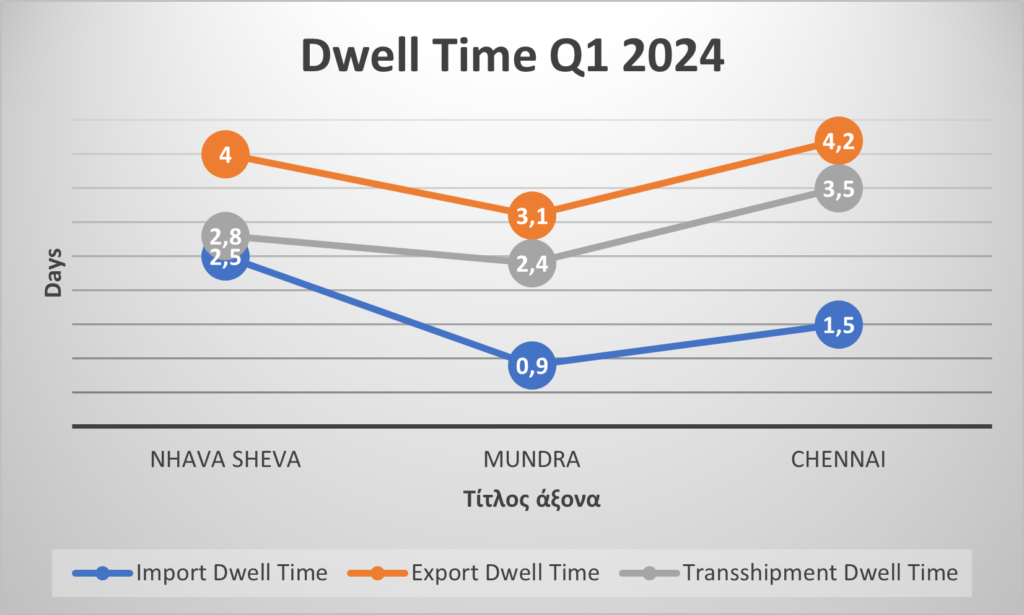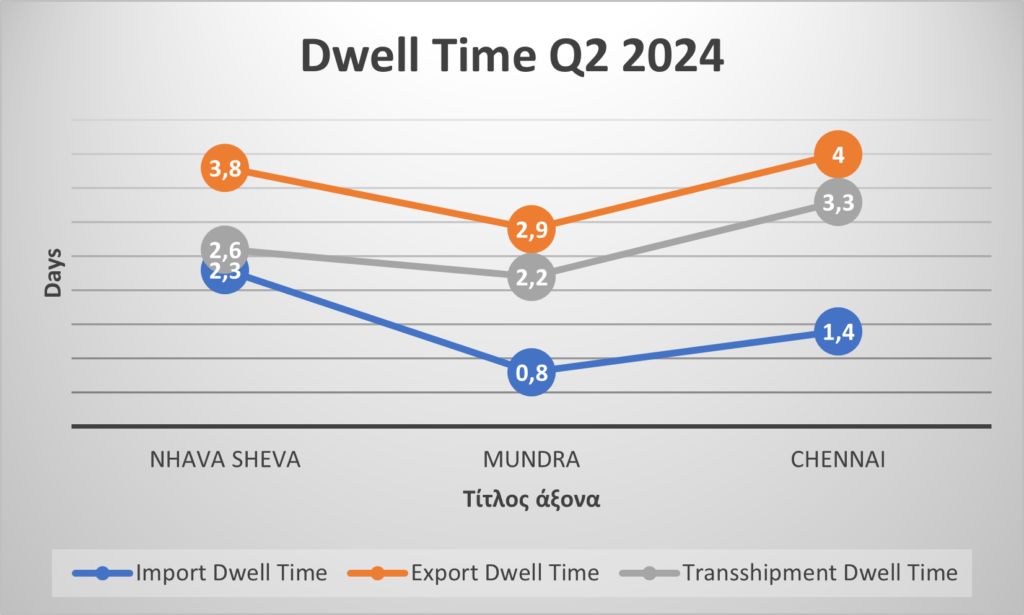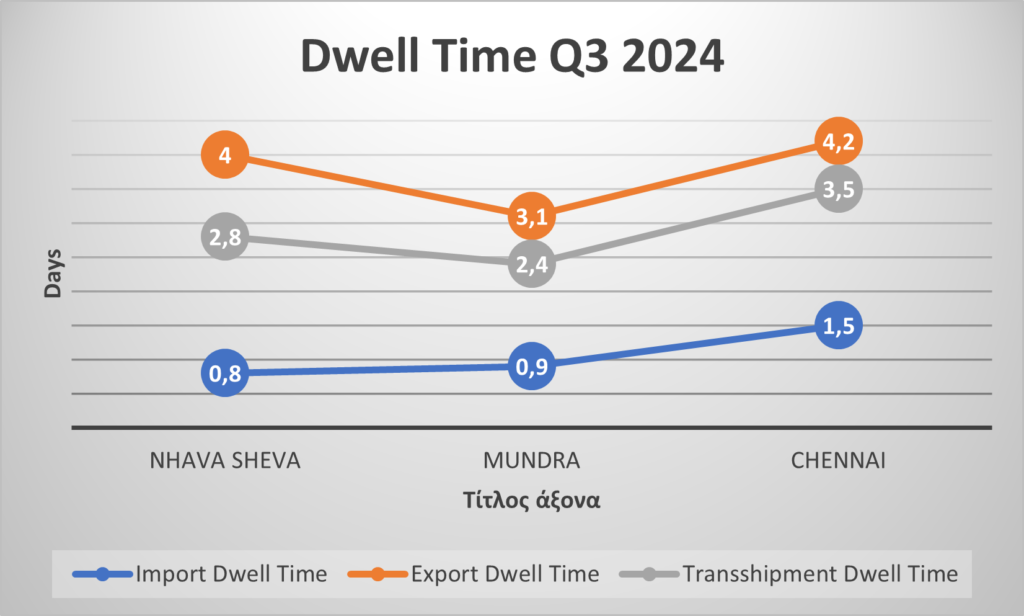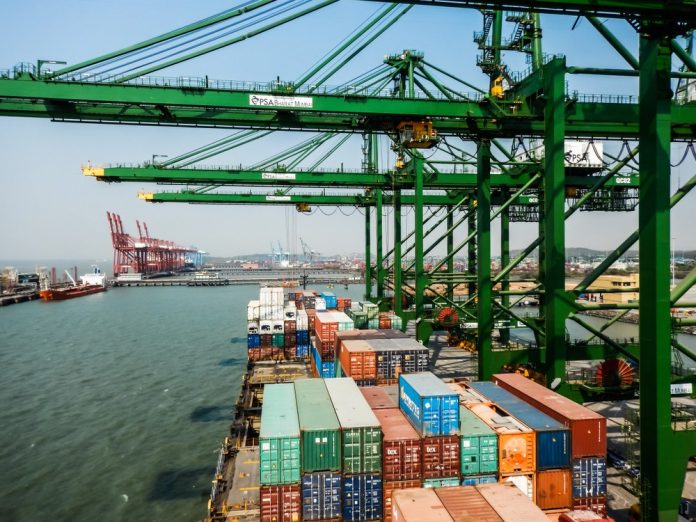Container News conducted an analysis to compare the performance metrics of Nhava Sheva port with other ports in the region or globally to contextualize its challenges and efficiency.
This analysis provided a clear picture of the operational status and challenges faced by these major ports, set against the backdrop of global economic conditions that influence trade volumes and port operations.
The analysis was based on several performance reports by open sources, such as Jawaharlal Nehru Port Authority (JNPA) and Drewry, from where metrics about dwell time and port throughput were extracted.

Mundra Port demonstrated robust growth and efficiency, with a notable increase in throughput volumes. The India port has managed to efficiently handle a record number of vessel operations and container throughput, showcasing its strategic advantage and strong infrastructure.
On the other hand, Nhava Sheva Port faced operational pressures due to surges in container volumes, which has led to increased dwell times and congestion. However, the port has implemented strategic adjustments such as temporary operational restrictions and focused evacuation days to manage these challenges.
Volume spikes test APMT terminal capacity in India’s Nhava Sheva Port
Meanwhile, Chennai Port is presumed to experience similar challenges as Nhava Sheva, including congestion and infrastructural constraints.
From the analysis on Nhava Sheva in comparison with other major Indian ports like Mundra and Chennai, seems that the significant congestion issues the port faces could be related to surges in container volumes. The implementation of temporary measures indicates a reactive approach to capacity and congestion management. In contrast, Mundra Port appears to handle similar challenges more robustly, likely due to better infrastructure and strategic planning that supports higher throughput with fewer congestion issues.
The analysis implies that Mundra might be better equipped with infrastructure and technological investments that enhance its throughput capabilities and efficiency. Although Nhava Sheva is taking steps to manage its operational challenges, its performance in terms of vessel turnaround times and dwell times still lags behind Mundra. Mundra, on the other hand, has shown a capacity to not only manage but also progressively increase its throughput, suggesting a more proactive and effective operational framework.
Nhava Sheva may need to explore more robust infrastructure developments and adopt more proactive operational strategies to enhance its competitiveness among regional counterparts.
Moving further, the analysis revealed clear discrepancies in performance across import, export, and transshipment dwell times.



Mundra continues to outperform the others, showcasing lower dwell times in all categories, of swell time. This reinforces its reputation for operational efficiency, supported by superior infrastructure and strategic planning.
In contrast, Nhava Sheva faces operational pressures, particularly with its export dwell time of 4.0 days, reflecting congestion challenges as it manages high container volumes. While import and transshipment dwell times are relatively moderate at 2.5 and 2.8 days, respectively, its overall performance remains behind Mundra.
The visualization clearly demonstrates Mundra’s superior ability to handle container traffic more efficiently, while Nhava Sheva, though improving, still grapples with longer dwell times in exports.
For Nhava Sheva the higher dwell times, especially for exports (4.0 days), indicate congestion and delays in clearing cargo from the port. This could be due to infrastructure limitations, inefficient yard management, or logistical bottlenecks that slow down the flow of containers. This results in longer export dwell times, potentially making the port less attractive to shipping lines.







